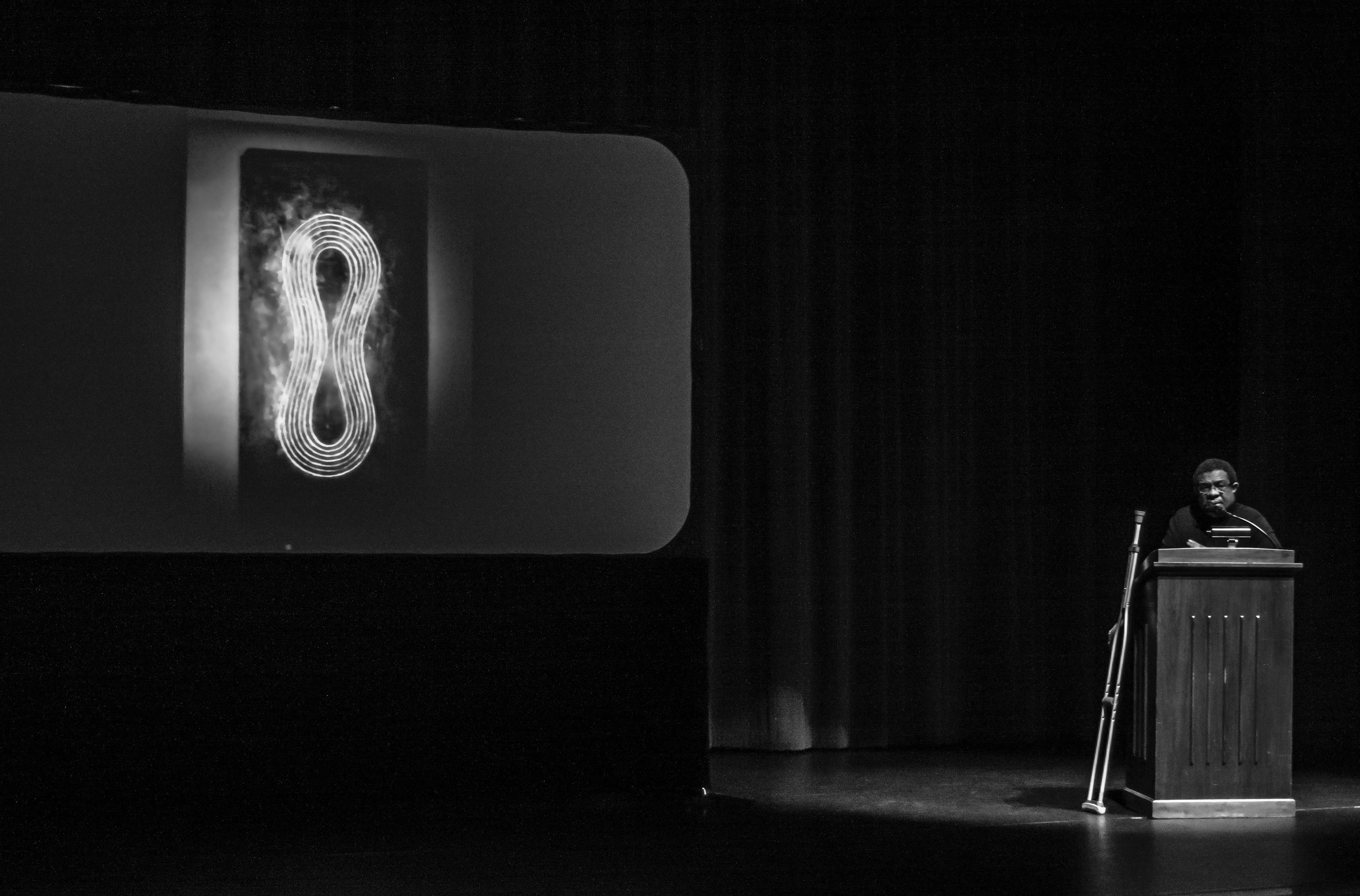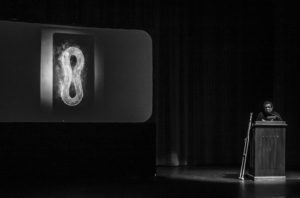The third and final lecture of the fall semester in Lewis and Clark’s Visiting Artist Lecture Series occurred on Wednesday, Nov 15, in the Ann Whitney Olin Theater in the Hatheway Cultural Center. This time, the artist was Thomas Sleet, a mixed media artist and Media Director at the Missouri History Museum.
Sleet got his degree from Washington University in 1988, where he majored in ceramics, with a minor in sculpture. He worked at a printing industry doing screen printing, and started his own printing business thereafter, making signs for business, hospitals, and so on. At one point, he was making signs for all the Drury Inns in the country. Eventually, he realized that the work he was doing was taking away time from his passion, art, resenting having to do his job. So, when he was given the opportunity by the Missouri History Museum to help organize an exhibit on the history of Kirkwood, where Sleet was born and raised, he was enthusiastic to do so. He collected interviews with the area’s oldest residents, combining them with carefully selected artifacts into an oral and visual history of the region. In doing so, he was able to show the cultural influences present there that heavily influenced his personal work. His family and neighbors were deeply steeped in traditional medicine, in a deep connection to the Earth and to nature. His joint interest in connection with nature, with history, and with stories, resonates throughout his work.
After the exhibit, called Kirkwood Roots, he went on to become a media developer at the museum, as well as becoming more involved in work at his studio.
Sleet works with materials you would be likely to find at a construction site. He’s made sculptures out of steel, cement, dirt and plywood, as well as found objects like sticks and carpeting. Once, he came across a sheet of some roofing tar that had been pulled off an old house that was being renovated. Struck by not only its texture, which resembles weathered lizard skin, as well as its position as an extinct building material, he called the sheet ‘dinosaur skin,’ and drew a doorway on it, which he envisioned as a doorway to the past, one so thin as to be impassable, only able to be looked through.
He also has a body of work made of cement layered on plywood, with foam laid on it as a foam. He would remove the foam once the cement was on, leaving indentations. He also did a similar process with carpeting, using plastic construction fencing as a mold he troweled cement over it, leaving behind a heavily textured series of ovals. Sleet has also worked using a large number of concrete i-shapes, combining them together into scalable structures, mock-ups of potentially larger constructions.
“I am inspired.” LC student Nick Budzban said, “I want to walk in the woods, and look for the art of nature. It’s… everywhere. Call me if you wanna walk anytime!”
Another student, Shelby Clayton, who studies graphic design, said, “I loved his art, the way he uses materials he’s found both man-made and in nature and uses them in his work shows how humanity should be, in harmony with the earth, rather than being self-centered. I am also a really big fan of his African inspired art with a futuristic twist, it’s amazing to see futuristic artwork that isn’t euro-centric.”
To see some of Thomas Sleet’s work, you can visit http://bit.ly/2zudGy1.
BRENNEN LARSON
blarson@lc.edu





